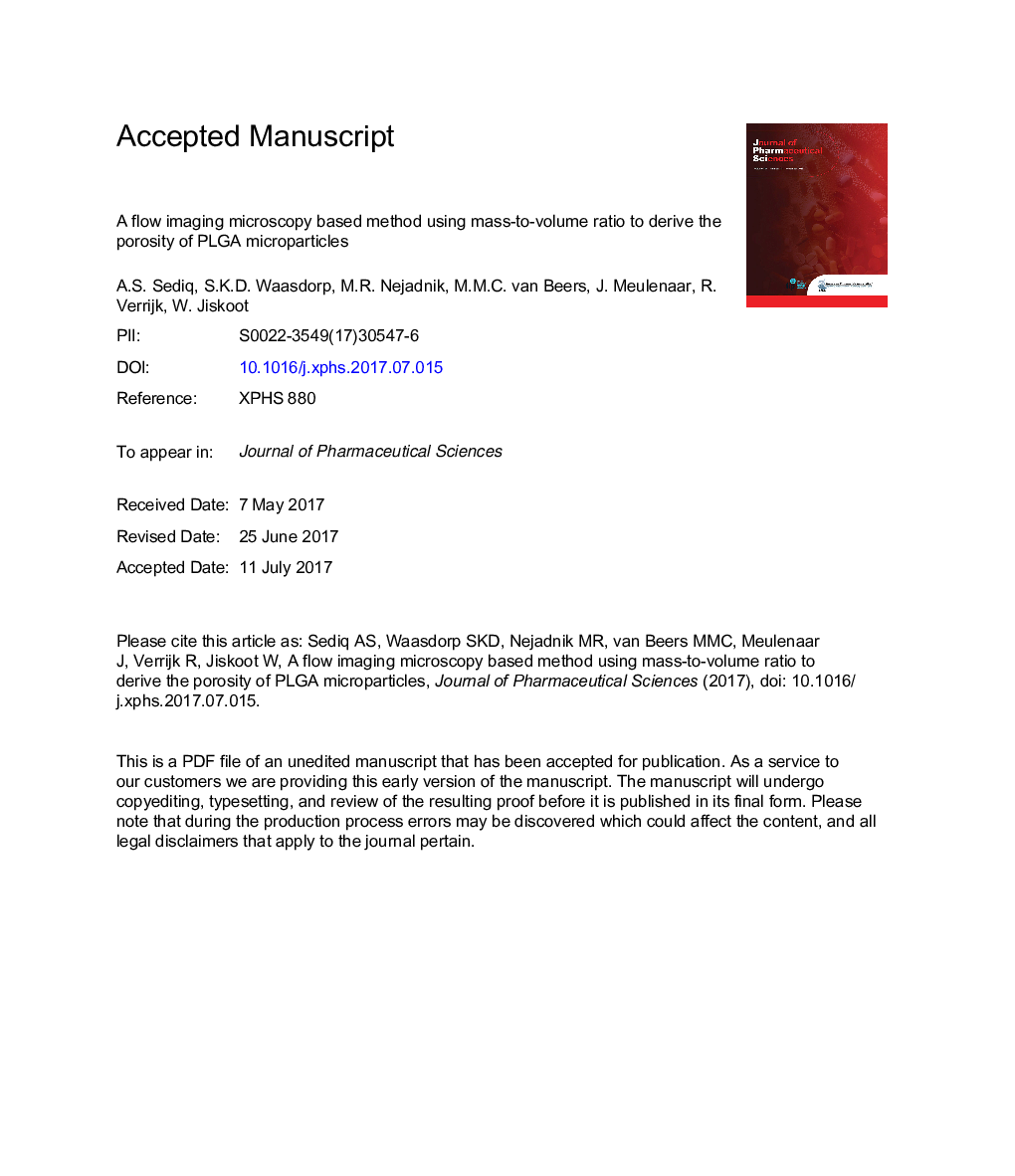| Article ID | Journal | Published Year | Pages | File Type |
|---|---|---|---|---|
| 8513794 | Journal of Pharmaceutical Sciences | 2017 | 32 Pages |
Abstract
The release of drugs from poly(lactic-co-glycolic acid) (PLGA) microparticles depends to a large extent on the porosity of the particles. Therefore, porosity determination of PLGA microparticles is extremely important during pharmaceutical product development. Currently, mercury intrusion porosimetry (MIP) is widely used despite its disadvantages, such as the need for a large amount of sample (several hundreds of milligrams) and residual toxic waste. Here, we present a method based on the estimation of the volume of a known mass (a few milligrams) of particles using micro-flow imaging (MFI) to determine microparticle batch porosity. Factors that are critical for the accuracy of this method (i.e., density of the suspending fluid, particle concentration, and postsample rinsing) were identified and measures were taken to minimize potential errors. The validity of the optimized method was confirmed by using nonporous polymethylmethacrylate microparticles. Finally, the method was employed for the analysis of 7 different PLGA microparticle batches with various porosities (4.0%-51.9%) and drug loadings (0%-38%). Obtained porosity values were in excellent agreement with the MIP-derived porosities. Altogether, the developed MFI-based method is a valuable tool for deriving the total volume of a known mass of PLGA particles and therewith their porosity.
Keywords
Related Topics
Health Sciences
Pharmacology, Toxicology and Pharmaceutical Science
Drug Discovery
Authors
Ahmad S. Sediq, Stephan K.D. Waasdorp, M. Reza Nejadnik, Miranda M.C. van Beers, Jelte Meulenaar, Ruud Verrijk, Wim Jiskoot,
